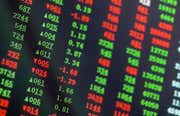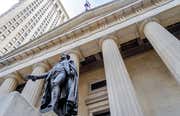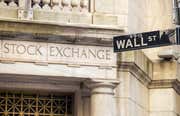
|
A commodity is a basic good used in commerce that’s interchangeable with other commodities of the same type. While the quality of a given commodity may differ slightly, it’s essentially uniform across producers. Once troy ounce of gold, for example, is basically the same product – regardless of the producer. (See also: Commodity Investing 101.)
Commodity prices usually rise when inflation accelerates, making them an important hedge against rising prices, potentially protecting the purchasing power of investor capital.
Commodities are also valuable in terms of diversification. Bonds are only minimally correlated with stocks, making them an effective tool in diversifying investments. Commodities provide even further diversification in that, historically, they have been negatively correlated to both stocks and bonds. Commodities such as gold are also often looked to as safe havens in periods of geopolitical uncertainty.
While there are several ways investors can access commodities – including the futures and options markets – ETFs offer an easy and cost-effective way to gain exposure to a variety of commodities. (For more, see: Commodities Trading: An Overview.)
SPDR Gold Shares – GLD
SPDR Gold Shares (GLD) is one of the largest ETFs in the world. The fund was designed to track the spot price of gold bullion. Each share represents ownership in one tenth of an ounce of gold held by the fund.
GLD is physically backed, meaning the shares are backed by the fund’s holdings of the precious metal (the gold is held in HSBC’s vault in London). It was the first U.S.-traded gold ETF and the first U.S.-listed ETF backed by a physical asset.
As the price of gold rises or falls, GLD moves up or down. Key factors that influence the price movement in gold prices (and, therefore, the ETF) include the level of production, the level of demand, the value of the U.S. dollar and central bank policy. Note that because the IRS considers gold a collectible, taxes on long-term gains are high.
Introduced by State Street Global Advisors in 2004, GLD has total assets of $35.40 billion as of Feb. 23, 2018, an average trading volume of 7.6 million shares and a 0.40% expense ratio.
iShares Gold Trust – IAU
iShares Gold Trust ETF (IAU) is another gold-specific ETF. It provides exposure to the day-to-day movement of the price of gold bullion. The fund keeps in gold in vaults scattered around the world. It doesn’t attempt to profit from the gold by selling it when price rises; instead, fund managers consider IAU a way for investors to buy and hold gold bullion. As a result, the fund tends to be very stable. Note that because the IRS considers gold a collectible, taxes on long-term gains are high.
Launched in 2005, IAU has total assets of $11.32 billion as of Feb. 23, 2018, an average trading volume of 9.0 million shares and a 0.25% expense ratio.
iShares Silver Trust – SLV
BlackRock’s iShares Silver Trust (SLV) is designed to track the spot price of silver bullion. Compared to gold, silver has many industrial uses and its price tends to be more volatile due to its smaller market size. One share of SLV represents ownership of slightly less than one ounce of silver. Major factors influencing the price of silver include industrial and consumer demand, the value of gold and the value of the U.S. Dollar.
Launched in 2006, SLV has total assets of $5.26 billion as of Feb. 23, 2018, an average daily volume of 7.4 million shares and an expense ratio of 0.50%.
PowerShares DB Commodity Index Tracking Fund – DBC
PowerShares DB Commodity Index Tracking Fund (DBC) provides an option for investors looking to invest in a basket of commodities. The fund tracks the DBIQ Optimum Yield Diversified Commodity Index Excess Return. The Index comprises futures contracts on 14 of the most heavily traded and important physical commodities in the world, covering energy, agriculture, and metals (precious and industrial). The commodities included in the Index are light sweet crude oil (WTI), heating oil, RBOB gasoline, natural gas, Brent crude, gold, silver, aluminum, zinc, copper corn, wheat, soybeans and sugar.
Depending on the specific commodity, major factors that influence prices can include any combination of supply and demand, weather conditions, geopolitical events, climate factors, labor, levels of stock/reserves, currency exchange rates, government regulation, emerging market demand, substitutes, energy prices and the level of inflation.
Launched in 2006, DBC has total assets of $2.58 billion, an average daily volume of 2.2 million shares and an expense ratio of 0.85%.
United States Oil Fund LP – USO
Crude oil – sometimes called "black gold" – is one of the most important and closely watched commodities in the world. The United States Oil Fund (USO) is the largest crude oil ETF by assets under management and average daily volume of contracts traded. The fund is designed to provide investors with exposure to West Texas Intermediate (WTI) light, sweet crude oil. To track the daily price movements and provide exposure to WTI crude oil, USO holds front-month futures contracts on crude oil. This means the fund must roll its contracts by selling the futures contracts expiring in the near month and buying the oil futures contracts expiring the next month. Because of that rolling, the fund charges a higher expense ratio than some of its peers.
Factors that influence the price of crude oil (and the ETF) include supply in terms of output, the level of oil reserves, the level of demand and geopolitical news. Rising levels of output and reserves tend to force crude oil prices lower, while declining levels push the price of crude oil higher. Geopolitical news and events, particularly out of the Middle East, can influence the price of oil. A perceived threat to supply levels (such as an imminent hurricane in the Gulf) will push oil prices higher.
Launched in 2006, USO has total assets of $12.03 billion as of Feb. 23, 2018, an average daily volume of 23.0 million shares and an expense ratio of 0.77%.
The Bottom Line
The rapid expansion of the ETF universe bears testimony to their popularity with investors and their effectiveness in enabling broad ranging asset allocation. ETFs provide a versatile and cost-efficient portfolio diversification vehicle for both small and large investors alike. Importantly, in contrast to mutual funds, the high level of transparency offered by ETFs empowers investors because they can have a clearer understanding of what they are investing in.
-
 Investing
InvestingCommodities Without Worries
ETFs have made commodities investing easier, but look before leaping. -
 Investing
InvestingiShares Gold Trust ETF
The costs of buying gold, insuring and storing it can be substantial for individual investors. The fund provides a lower-cost method to buy and hold gold. -
 Investing
Investing(GLD, DGL, IAU) 3 Bond ETFs in the Gold Sector
Find out more about the top ETFs that track the gold sector, such as the SPDR Gold Shares ETF, the PowerShares DB Gold ETF and the iShares Gold Trust ETF. -
 Investing
InvestingPros and Cons of Gold ETFs Vs. Futures
ETFs and gold futures are two ways to diversify into the metals asset class, but there are pros and cons to both instruments, find out which one to pick. -
 Investing
InvestingDBC: PowerShares DB Commodity Tracking ETF
Find out about the PowerShares DB Commodity Tracking ETF, and explore a detailed analysis of the fund that tracks 14 distinct commodities using futures contracts. -
 Financial Advisor
Financial AdvisorHow to Invest Your Excess Cash in Commodities ETFs
Discover how commodity-based ETF investments can help diversify your investment portfolio. -
 Investing
InvestingDBC Vs. GSG: Comparing Commodities ETFs
Analyze two of the most widely held commodity index ETFs, and see how they stack up against each other. -
 Investing
InvestingUnderstanding GLD, UGLD and Other ETF Funds
Gold ETFs operating as trusts are straightforward. The trust holds gold and issues shares. Learn how ETFs are more efficient than buying physical gold. -
 Investing
InvestingGold vs. Gold Miner ETFs: Comparing Shades of Gold (GLD, GDX)
Compare commodity-based gold ETFs with equity-based gold ETFs to find out which is most likely to provide investors with the best return on investment. -
 Investing
InvestingInvesting in Gold: Direct Vs. Professional Management (ABX, GG)
Find out how you can access the gold market through common stock, futures contracts, and actively managed or passively managed ETFs and mutual funds.


